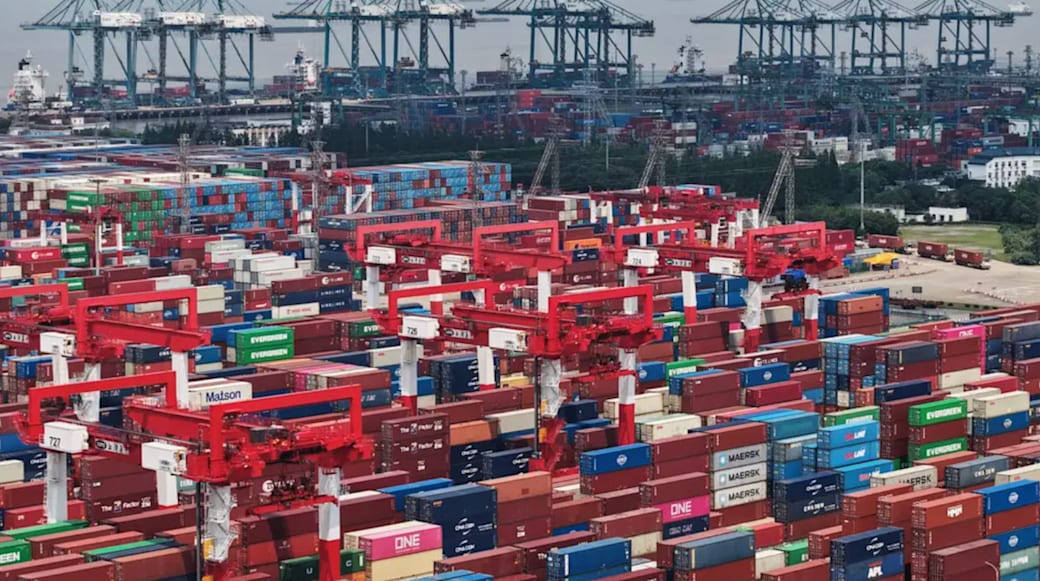US, China Ink Trade Agreement, Says Donald Trump
President Donald Trump announced on Thursday that the United States and China have signed a trade agreement, marking a significant step in de-escalating the trade war between the world’s two largest economies. The deal, finalized after marathon talks in London, builds on a May truce reached in Geneva, rolling back punitive tariffs and addressing key issues like rare earth mineral exports and Chinese student access to U.S. universities.
Framework of the Deal
Speaking at a White House event, Trump declared, “We just signed with China yesterday,” describing the agreement as a move to “open up China” for American businesses. The deal, detailed in a joint statement, reduces U.S. tariffs on Chinese imports from 145% to 55%, while China lowers its tariffs on U.S. goods to 10%. China also committed to expediting exports of rare earth minerals and magnets, critical for industries like electric vehicles and aerospace, after imposing restrictions in April. In return, the U.S. agreed to lift some export controls on technologies like semiconductor design software and to allow Chinese students to continue studying at U.S. universities.
U.S. Commerce Secretary Howard Lutnick confirmed the deal was “signed and sealed” on Tuesday, emphasizing that China would deliver rare earths “up front.” Treasury Secretary Scott Bessent and U.S. Trade Representative Jamieson Greer, who led negotiations, called the agreement a “historic trade win” that addresses the $295.4 billion U.S. trade deficit with China in 2024.
Mixed Reactions and Economic Impact
The agreement has sparked varied responses. Chinese state media and influencers hailed it as a victory, crediting Beijing’s firm stance for securing significant U.S. tariff reductions with minimal concessions. A Chinese social media post by user Chun Feng Yi Ran, which garnered thousands of likes, stated, “Our ancestors didn’t cave in, why should we?” Meanwhile, U.S. officials framed the deal as a step toward rebalancing trade, with Bessent noting progress on curbing fentanyl precursor flows from China.
Global markets reacted positively, with the S&P 500 surging 3.1% and Hong Kong’s Hang Seng Index rising over 3% on news of the deal. However, analysts caution that the agreement is a temporary framework, with a 90-day pause on new tariffs set to expire on July 8. Goldman Sachs noted that the U.S. effective tariff rate of 17.8% remains the highest since 1934, potentially reducing household purchasing power by $2,800 annually.
A Fragile Truce
The deal follows a turbulent period of tit-for-tat tariffs, with the U.S. imposing 145% duties on Chinese goods and China responding with 125% tariffs earlier this year. The Geneva talks in May had lowered these to 30% and 10%, respectively, but disputes over rare earth exports and U.S. visa restrictions threatened to unravel progress. The London agreement aims to stabilize the Geneva framework, though experts like Josh Lipsky of the Atlantic Council warn that “a broad US-China trade deal or geopolitical rapprochement is not close.”
Critics argue the deal lacks resolution on deeper issues, such as China’s state-led economic model and intellectual property concerns. Wendy Cutler of the Asia Society noted that the U.S. “paid a heavy price” for regaining rare earth access by compromising on technology export controls.
Looking Ahead
Trump teased further deals, hinting at a potential agreement with India to “open up” its market. The administration plans to continue talks with China, with Bessent indicating a meeting in the coming weeks to negotiate a “more fulsome agreement.” For now, the deal offers relief to businesses and consumers facing higher costs, but with tariffs still in place and global economic uncertainty lingering, the path to a lasting resolution remains uncertain.
